- Established 1982 -HOME: www.hiltonpond.org
THIS WEEK at HILTON POND Subscribe for free to our award-winning nature newsletter (Back to Preceding Week; on to Next Week) |
HUMMERS & CATBIRDS, Hilton Pond Center was a busy place in October 2018, with lots of birds banded and some interesting natural phenomena to observe. Our latest photo essay below is a compendium of those experiences, from long distance migration and the fall shuffle of local birds to an unusual rainbow and autumn leaf color. All text, maps, charts & photos © Hilton Pond Center The second of October 2018 was the first day since the last week in March that we neither saw nor banded a Ruby-throated Hummingbird this year while at Hilton Pond Center. However, such RTHU absence did NOT mean early October is the right time to take down our hummingbird feeders! We do suspect by 1 October 95% of North America's eastern hummers are already on their way south, but there are always stragglers. (Our latest ever at the Center is 18 Oct.) In fact, we traditionally keep 6-8 half-filled feeders up all winter, dutifully changing the sugar water mix only weekly because it won't spoil as fast in cold weather.
All text, maps, charts & photos © Hilton Pond Center Meanwhile, there's also the possibility by early October that we'll get one of those rare vagrant hummingbirds from out west; these often don't show up until November or later. (We've had two Rufous Hummingbirds at the Center in 37 years, an "early" one on on 23 September 2002 and another on the more "typical" later date of 20 November 2001 for the hatch-year male pictured above.) Keep your feeders fresh at least until Thanksgiving, and if you live in the eastern U.S. and have a hummer after mid-October especially in the Carolina Piedmont and Mountain Regions, in western Virginia, or in West Virginia, please let us know ASAP at RESEARCH. (Send a photo if you can!) All text, maps, charts & photos © Hilton Pond Center After announcing 2 October as the first day since late March 2018 that we neither saw nor captured a Ruby-throated Hummingbird at Hilton Pond Center, the morning of 3 October was the same with nary a hummer to be seen. Despite the absence of RTHU we dutifully changed out ten sugar water feeders at dawn that morning, which probably was NOT why we then trapped two unbanded hummers before noon--both female. Although we weren't amazed to get a new RTHU at this time of year (we expect them as late as mid-October), we WERE surprised by the first of them. As soon as we gently removed Hummer #1 from the trap we knew we had captured an ADULT female ruby-throat, making her the latest of her age and sex encountered in 35 years of research at the Center. With the previous late date for an adult female being 27 September, this bird was SEVEN days later than the previous record. We find this especially interesting in light of this year's capture of an adult MALE ruby-throat on 23 September--NINE days later than our previous late date for HIS age and sex. Although both these late records are well outside the norm and statistically significant, we're truly at a loss to explain the birds' "tardiness." We seriously doubt a hurricane nearly three weeks ago slowed them down in migration, and we don't think an unusually warm first week in October in South Carolina was the cause. Perhaps you have a hypothesis that will help shed light on all this, keeping in mind that in nature countless variables often make it impossible to ascribe a cause-and-effect relationship.
All text, maps, charts & photos © Hilton Pond Center One anticipated question we CAN answer is how we so quickly knew today's Hummer #1 was an ADULT female. Through binoculars you'd be unlikely to know, but in-hand this bird had dorsal plumage that was a give-away. Notice in our photo above that none of her back feathers are edged in buff; such buffiness would have indicated she was an immature bird still carrying plumage she acquired as a nestling. Typical adult female RTHU at this time of year have uniformly colored back feathers. (NOTE: You might want to compare the back of this adult Ruby-throated female with that of the young male Rufous Hummingbird in the photo at the top of this page. Notice the rusty bases to the tail feathers of the latter.)
All text, maps, charts & photos © Hilton Pond Center We further confirmed this female ruby-throat's age by looking at her bill, which was almost completely smooth. Young birds of either sex have etchings or corrugations on the upper mandible (above) that mostly disappear before hummers return the next spring. All text, maps, charts & photos © Hilton Pond Center On the morning of 5 October 2018) we witnessed what was for us a new phenomenon. We peered out the back window of our old farmhouse at about 9:45 a.m. to see the sun was coming up on Hilton Pond. The southeast side of the impoundment was still in shadow, but where the sun's rays struck the water there was an unmistakable streak of prismatic color (see below)--what we are calling for lack of a better name, a "Hilton Pondbow."
All text, maps, charts & photos © Hilton Pond Center All the colors of a typical aerial rainbow were there, from red to orange to yellow to green to blue, and even a little that harder-to-see violet. Unlike a sky rainbow that often disappears after a few minutes, the Pondbow was persistent--creeping across the pond surface from southeast to northwest as the sun got higher in the sky. We took many photos over the course of perhaps 30 minutes, none of which did the Pondbow justice. Normally an aerial rainbow occurs when there are lots of water droplets in the sky at just the right place for solar rays to become refracted and broken into that multitude of spectral colors described above. Thus, we thought the Pondbow might have been created by a layer of water vapor--there was heavy dew around the pond--but close examination didn't reveal anything unusual in that regard. It's important to note this year there is again a uniform thin layer of nearly microscopic Rootless Duckweed, Wolffia arrhiza, covering Hilton Pond--something that occurred for the first time in 2017. Duckweed, like many photosynthetic plants, undoubtedly gives off oily organic compounds as part of its normal metabolism, so our thinking is the Pondbow was the result of such an oily sheen--very much like a rainbow-like oil slick one sees in a parking lot after a rain. (It may be at this point in the season some duckweed is dying as winter approaches, likely giving off even more oily substances as it decomposes.) As a biologist that's the best explanation we can offer for the "Hilton Pondbow" at this time. Maybe there's physics major out there who can offer a better hypothesis for this wondrous event. If so, let us know with your comments at INFO. All text, maps, charts & photos © Hilton Pond Center As our fall Ruby-throated Hummingbirds declined in number at Hilton Pond Center, Northern Cardinals came on strong. In fact, from 3 September through 7 October 2018 we banded 38 new "redbirds"--13 of those the first week of October. We seriously doubt any are migrants from northern climes, although NOCA do show a little north-south movement in colder parts of their range. Thus, we're guessing these individuals are part of the annual "fall shuffle" during which birds in the region roam around a bit, dispersing from nesting or fledging locales into adjoining areas. Among other things, this behavior may serve to reduce inbreeding but also allows a population to colonize sites unoccupied by previous cardinals. Those 38 new Northern Cardinals in the past month have been a pretty even mix of young and old, male and female. The Center hosts quite a few resident cardinals we banded in past years, so the arrival of new adults seems to support the fall shuffle hypothesis. An abundance of fledglings suggests area cardinals had a pretty good reproductive year.
All text, maps, charts & photos © Hilton Pond Center Adult male Northern Cardinals are brilliant crimson in color, while male young-of-the-year aren't quite as bright and typically have smaller crests. In early fall it's usually still easy to age female NOCA, as illustrated in the attached two photos taken in early October. Above is an adult female that hatched at least in 2017. Although not as bright as a male, she still shows a good bit of red color--even in the little feather tufts on her eyelid rims. More important, her upper and lower mandibles are brilliant red-orange. Conversely, the hatch-year female below shows more brown and less red plumage, and her mandibles are dark brown.
All text, maps, charts & photos © Hilton Pond Center Folks are often surprised to learn bills can change color in birds, thinking these structures are not living tissue. The bill sheath is indeed "dead"--it's made of the same keratin as your fingernails--but underlying the sheath is a layer of living cells. Young cardinals--fed mostly with caterpillars and other insects by their parents--have dark bills, while older birds that supplement their invertebrate diet with more seeds and berries have bright bills. Vegetable matter they consume contains carotene and xanthophyll pigments, among others, that the cardinal lays down not only in its feathers but also in the living portion of its mandibles. As winter approaches and Flowering Dogwood berries mature, cardinals of all ages seek out these delectable energy-rich fruits that also contain pigments that help youngsters take on bright bills--a sign of health and maturity. Store-bought bird seed likewise contains these colorful pigments, so in the absence of dogwoods or other fruiting plants in your yard keep your feeders filled. If natural seeds and fruits are available your cardinals will develop red bills, but it's nice to know your millet and sunflower may play a supplemental role in helping young cardinals "grow up." NOTE: Although we did not get a photo, an adult male Northern Cardinal netted on 6 October 2018 was a very special individual. Upon checking his band number we discovered he had been banded locally on 12 Dec 2006 at an unknown age. He is now classified as after-12th-year and officially the oldest bird of any species we have encountered at Hilton Pond. The Bird Banding Laboratory's longevity record for a free-flying NOCA is a Pennsylvania female that lived 15 years 9 months. Rest assured we will be looking for this elderly redbird during the coming winter. All text, maps, charts & photos © Hilton Pond Center Last month's prostate cancer treatment made it difficult to do much field work, but as health improved we were able to deploy a few more mist nets around the old farmhouse at Hilton Pond Center. As noted above, many October captures were Northern Cardinals, but each day brought new surprises as fall migration continued. Gray Catbirds and the spot-breasted thrushes (especially Swainson's and Gray-cheeked) showed up and there also was a slow through-put of fall warblers.
All text, maps, charts & photos © Hilton Pond Center Mid-afternoon on 9 October 2018 we noticed one of the nets had snared a yellow bird that didn't look like an American Goldfinch. From a distance most of the yellowish warblers look alike, but as we got closer we could see this individual had a mostly yellow face, plus a yellow breast with dark streaking. There was a faint cheek patch and a yellowish rump, and partly yellow toes. Without a doubt we had netted a Cape May Warbler, Setophaga tigrina. Because this bird was so yellow we knew it was a male but despite his bright appearance this was NOT his adult breeding plumage; thus, he must have hatched this year. Next spring as an adult he'll still be bright yellow and will add a distinctive chestnut cheek, while his white wing patch will be even more pronounced. Although Cape May Warblers are named for a place in New Jersey where they apparently were first identified they don't breed in the Garden State. Instead they spend summers in the spruce-fir forests of New England and southern Canada, departing in autumn for the West Indies. A few hours after capturing the adult male Cape May we netted a very dull-colored immature of the same species. This one looked nothing like the first bird. Many folks might have called it a "confusing fall warbler" except diagnostic breast streaks, pale yellow rump, and partly yellow toes would have shouted "Cape May Warbler" to the attentive observer. All text, maps, charts & photos © Hilton Pond Center
All text, maps, charts & photos © Hilton Pond Center The middle week of October 2018 was a little unusual at Hilton Pond Center because we caught and banded the "Mimic Thrush Trifecta"--Gray Catbird (above), Brown Thrasher (just below), and Northern Mockingbird. These three are NOT part of the North American Thrush Family (Turdidae) but are classified in the Mimidae, whose name reflects their ability to imitate songs of other birds. Some mimids even replicate noises produced by inanimate objects such as squeaky gates and machinery.
All text, maps, charts & photos © Hilton Pond Center Although all three species undoubtedly breed on Center property they are relatively uncommon locally. We get a sizable rush of catbirds in autumn when they migrate in from further north--possibly on their way to Central America; we almost never see catbirds come winter, and they are a very rare addition to our York/Rock Hill SC Christmas Bird Count. (Incidentally, during March in several years we banded big numbers of Gray Catbirds on our Operation RubyThroat study site in Belize. Those catbirds undoubtedly were just about to migrate north.) Brown Thrashers occasionally spend the winter at the Center; it's unlikely many of them leave the U.S. in fall. Northern Mockingbirds are mostly sedentary, but those from northern latitudes (or higher elevations) may fly south, going as far as Mexico and the Caribbean.
Northern Mockingbird (NOMO), Mimus polyglottos, was Hilton Pond's bird of the day for 13 October 2018, mostly because we captured FOUR at one time in two side-by-side mist nets. This was an unusual event for us, in part because NOMO are so independent they seldom tolerate others of their own species except during breeding season. Thus, we suspect our four birds were a family group from this past summer, apparently one adult and three immatures. Determining age of recently fledged Northern Mockingbirds is quite easy in that their irises are a dull brown or olive color. This begins to change as the youngsters age, with full adults sometimes typically having bright yellow eyes. However, mockingbird researchers have shown eye color isn't as useful in determining actual ages in adults since mature NOMO can retain eyes of "yellow-green, orange-green, orange brown, dirty yellow, dirty orange, clear yellow, or clear orange" and rarely white. Three of the mockers today had irises with a degree of brown milkiness, hence my belief they were young-of-the-year. The fourth (see attached photo) appeared to be an adult, based on plumage and irises we would categorize as "dirty orange." All text, maps, charts & photos © Hilton Pond Center When we post our photo essays to Hilton Pond Center's Web site, two avian species almost guaranteed to generate more comments than any other are Ruby-throated Hummingbird and Eastern Bluebird. Everybody seems to love both. In 2018 our latest RTHU appeared on 4 October; by now it and almost all its conspecifics are long gone to wintering grounds in Mexico and Central America. Bluebirds, on the other hand, nest locally in boxes we provide AND flock up to spend winter right here in the Carolina Piedmont.
After lunch on the afternoon of 14 October 2018 we were gazing out the big kitchen window of the Center's grand old farmhouse and noticed activity around one of those wooden boxes we provide for cavity nesting birds. We spied a couple of Eastern Bluebirds going in and out--established pairs often explore potential nest sites all winter long--when we noticed something moving in a mist net deployed some distance behind the nest box. We hurried outside, figuring a wayward bluebird had gotten caught. We were partly wrong. Actually, when we went outside and got closer we found no fewer than SIX Eastern Bluebirds (EABL) were in that same net, squawking as bluebirds are wont to do. We quickly checked each to make sure it was okay and noticed that one--an adult male--was already banded. Extracting him first, we made a note of his band number on our iPhone and released him as we got to work removing the remaining individuals. They continued squawking as we worked, which induced the just-released banded male to start dive-bombing--one time swooping close enough for us to feel the brush of his wings. This was all an apparent effort to get some big Homo sapiens (a potential predator) away from those other birds. Undeterred, we continued at our task, at which point the banded male dived, again--and got caught, again. When we finished extracting the other birds and placing them temporarily in mesh bags for transport to the banding table, we removed the banded male from the net, again, and released him, again. He flew off, landed on a branch, ruffled his feathers, and seemed to be waiting for a reunion with the remainder of his flock. (Incidentally, this adult male EABL was banded as a hatch-year individual on 14 October 2017. It's likely he fledged from a local nest.) As we closely examined and banded the five new bluebirds we realized each--one male and four females--was an immature hatched in 2018. That led us to suspect the already banded bird could have been the father of all and that he was just continuing with attentive post-fledging care. Since Eastern Bluebirds often have two and sometimes three broods, an experienced pair might have a dozen or more offspring that stick with the family for the winter and--if unmated themselves--stay right through the following breeding season. There is some poorly documented evidence second-year Eastern Bluebirds may rarely serve as "helpers" at their parents' nest.
All text, maps, charts & photos © Hilton Pond Center It may surprise folks to learn both male and female Eastern Bluebirds are blue. That said, a mature male (see top photo of a spring individual) is always much bluer than his mate (summer female, just above), especially in wing, head, and tail. (The orange breast is also typically brighter and more extensive in adult males.) In autumn younger males and even older ones will have some brownish wash to their back plumage. When these drab feather tips wear off by next spring the males will be sparkling blue and ready to woo their somewhat drabber females to the nearest nest box. All text, maps, charts & photos © Hilton Pond Center
All text, maps, charts & photos © Hilton Pond Center Sometimes at dusk it's better to look at trees instead of sky and clouds. On the evening of 15 October 2018 at Hilton Pond Center the sunset painted leaves and limbs of our big Shagbark Hickory a deep golden yellow that even washed the exfoliating trunk. All text, maps, charts & photos © Hilton Pond Center
Detail of Ruby-throated Hummingbird foot (above), showing numbered aluminum band 6,000 RUBY-THROATS, To celebrate the banding of our 6,000th Ruby-throated Hummingbird (color-marked immature male, above) during the past 35 years of research, Hilton Pond Center is undertaking a fund-raising effort in support of "Operation RubyThroat: The Hummingbird Project." Our goal in the Summer and Fall of 2018 is to raise ONE DOLLAR for each of the 6,193 hummers banded locally through October of this year. If you'd like to support our on-going study of hummingbird migration, site fidelity, longevity, and population dynamics here in the U.S. and in Central America, please click on one of the links below to send a tax-deductible donation. (You can also donate through our Facebook fundraising page.) Checks also can be sent to Hilton Pond Center at: All contributions are tax-deductible on your Don't forget to scroll down for Nature Notes & Photos, |
|---|
|
"This Week at Hilton Pond" is written and photographed by Bill Hilton Jr., executive director of Hilton Pond Center for Piedmont Natural History
|
|
|
Please refer "This Week at Hilton Pond" to others by clicking on this button: |
Comments or questions about this week's installment? Send an E-mail to INFO. (Be sure to scroll down for a tally of birds banded/recaptured during the period, plus other nature notes.) |

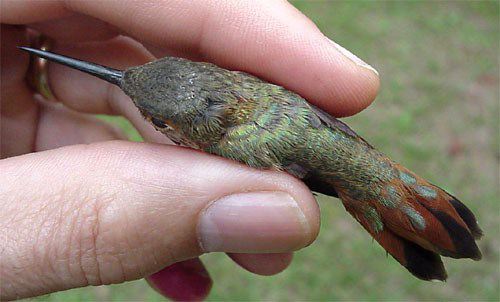
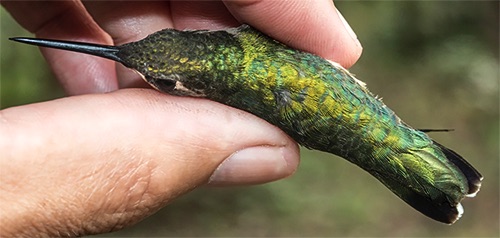
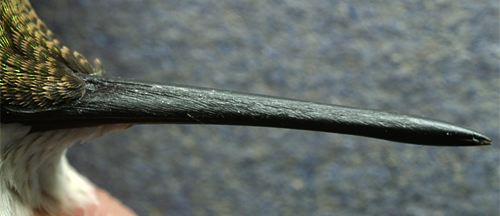
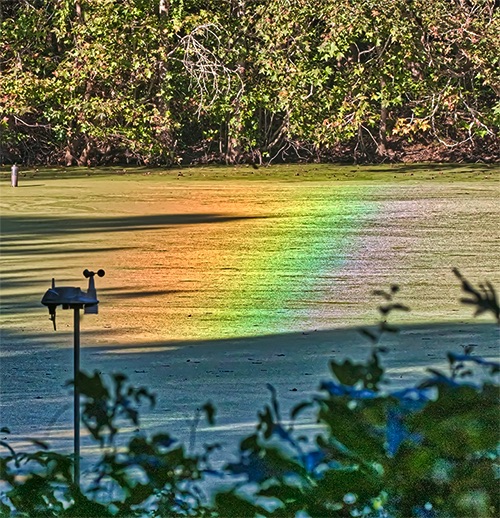
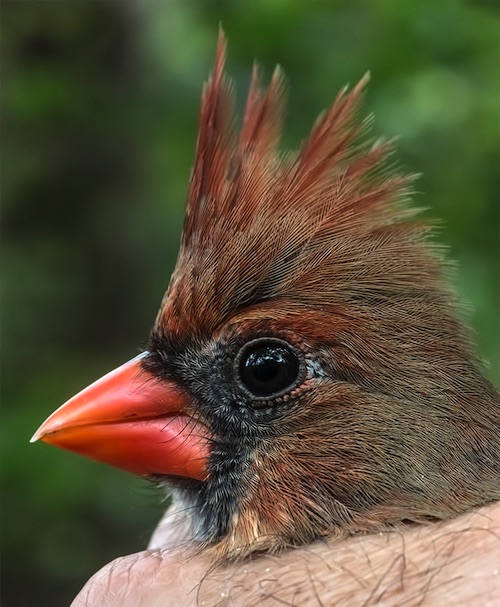

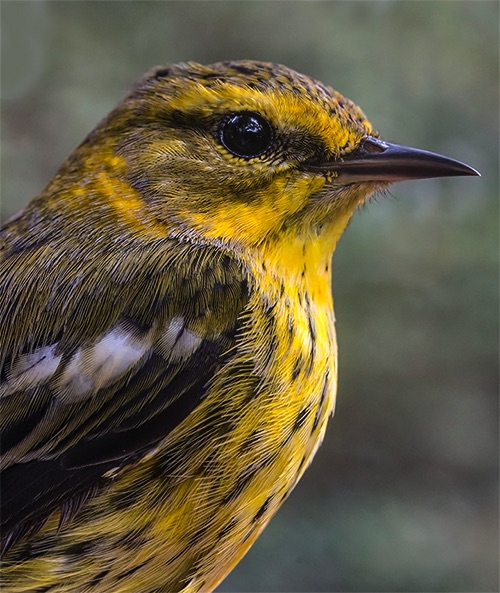


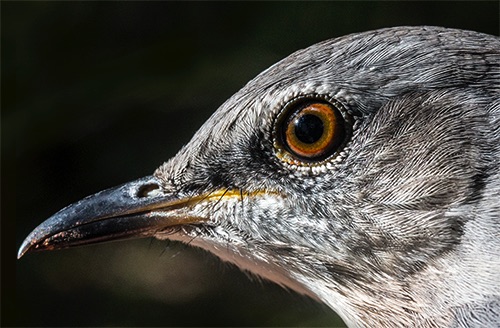
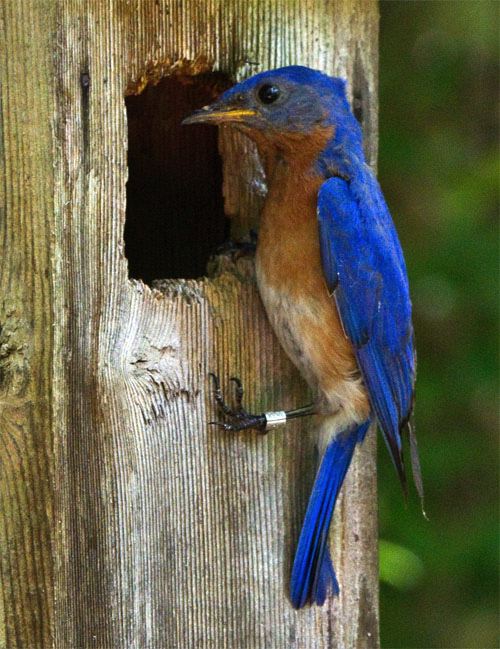
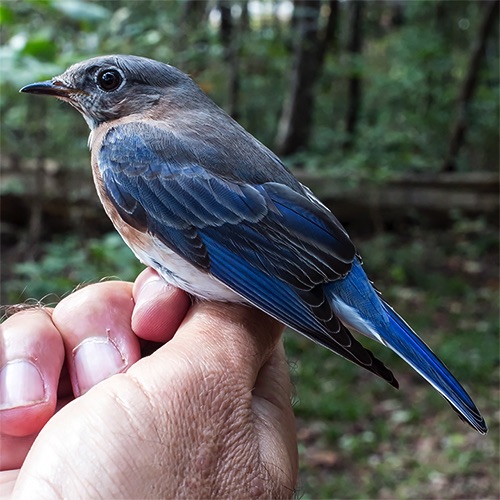
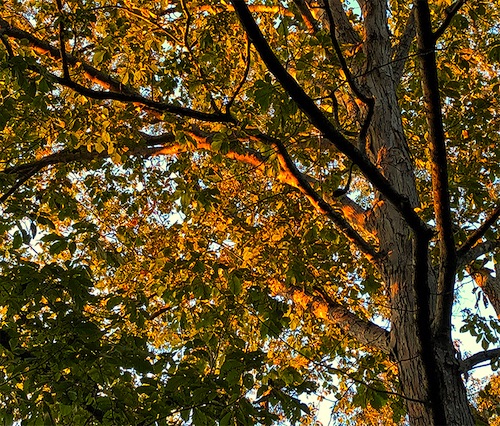
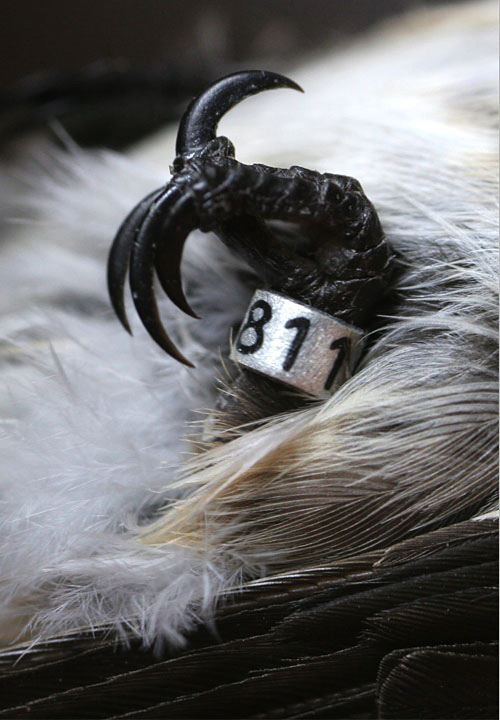









 Please report your
Please report your